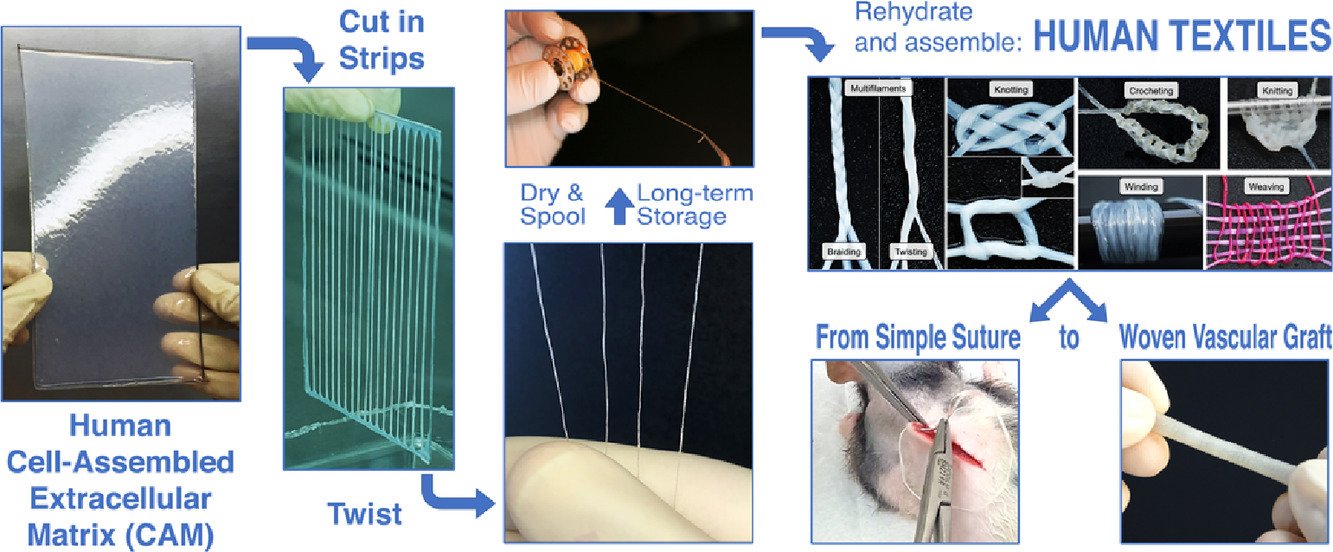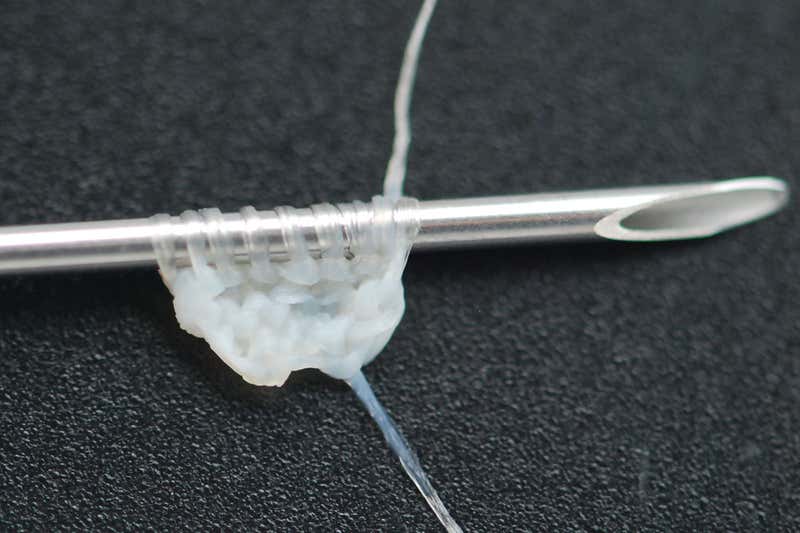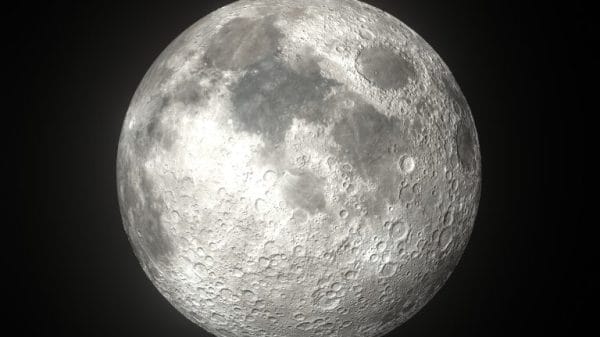A team of scientists at the French National Institute of Health and Medical Research in Bordeaux have managed to grow yarn from human skin cells – which is being dubbed a “human textile”.
This new yarn could potentially be used to stitch up people’s wounds or assemble skin grafts which can then be implanted into the body. Unlike synthetic materials which are used for the stitches and scaffolds to grow regular tissue grafts, the recently dubbed “human textile” could minimise the risk of triggering immune responses in the body. These immune responses usually result in inflammation which complicates the patient’s healing process.
To assemble the yarn, the researchers cut sheet of human skin cells into long strips, which were then woven together to make a yarn which can be made into a plethora of essential biological components and shapes:
Speaking to New Scientist, lead researcher Nicholas L’Heureux said:
We can sew pouches, create tubes, valves and perforated membranes. With the yarn, any textile approach is feasible: knitting, braiding, weaving, even crocheting.

However, the yarn has only been tested on animals, being used to stitch a rat’s wound which healed over in two weeks, and create a skin-graft from a custom-made loom to seal a sheep’s artery and prevent it from leaking.
While this human yarn has the potential to be a major medical breakthrough and additionally elicit repulsed responses in its fellow humans (It’s only skin, we all have it), I am left wondering where the researchers get their knitting patterns. Perhaps they make their own?
If your skin wasn’t left crawling after reading about human textiles, click here to view tips on naturally detoxing your skin.
Image via: Magnan et al., Acta Biomaterialia. (2020)














